Cassava thematic research areas

The Cassava Program of the Alliance is a multidisciplinary team of research and development scientists drawing on expertise from six research areas. Below we explore each Research Area, its objectives and outcomes in relation to the research on the cassava crop.
1. Enhancement of Genetic Resources
Improved varieties (breeding and pre-breeding).
This research area targets production and economic issues with potential genetic solutions, aiming to increase productivity, sustainability and utilization of cassava in LAC and SEA regions.
Some important discoveries of the Cassava Program include the identification of new sources of:
- delayed post-harvest physiological deterioration,
- resistance to whitefly infestation, cassava brown streak disease (CBSD), and cassava frog skin disease (CFSD);
- high accumulation of β-carotene content (high-provitamin A);
- short cooking time;
- high and low amylose content; and high root yield productivity,
- sustainability and utilization of cassava in LAC and SEA regions.
Contact:
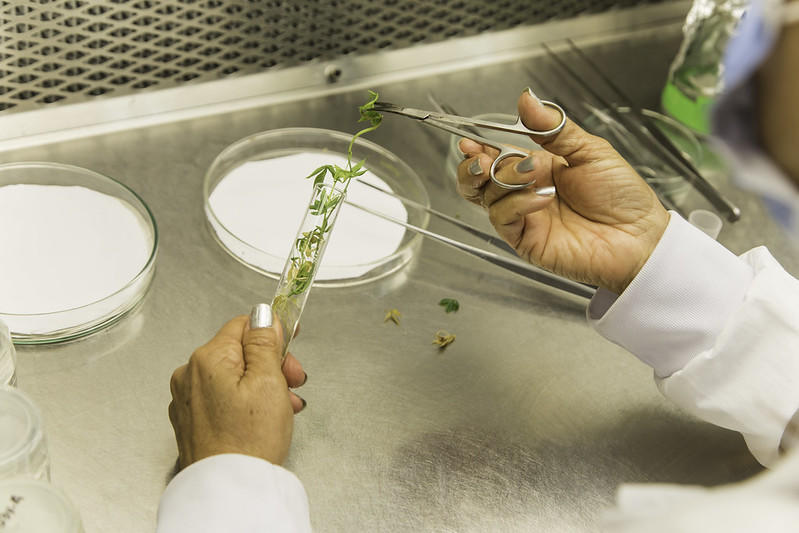
Cassava Breeding Workshop on new concepts and best practices, and hands-on training on breeding tools.
©Alliance/Juan Pablo Marin Garcia
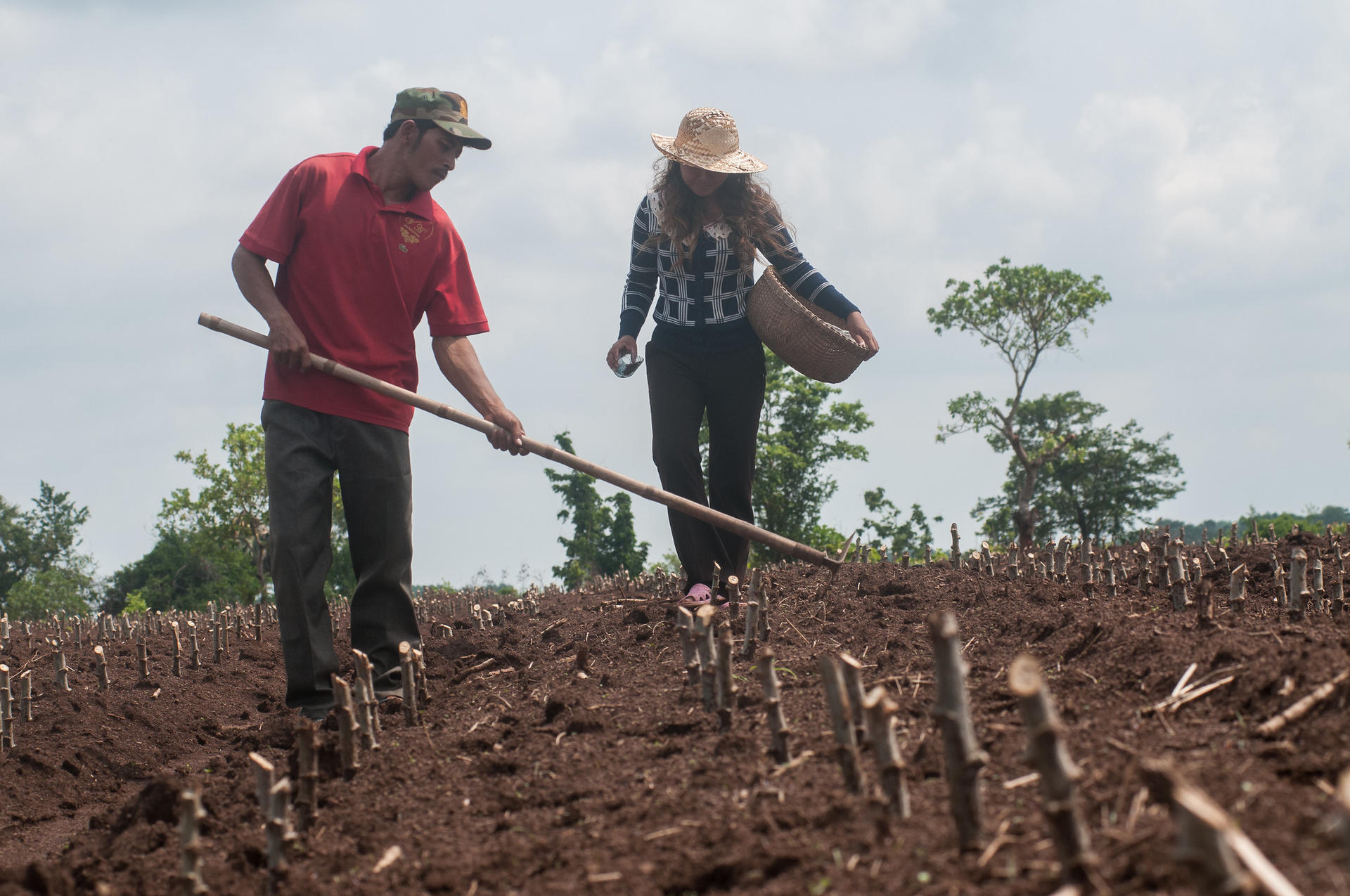
Using a hoe to dig small holes for fertilizer. Communities in Kampong Cham province, Cambodia, have been taught more sustainable planting methods to improve cassava production.
©Alliance/GeorginaSmith
2. Agronomy and Soil Management
Optimized fertility solution.
The main objective of the second research area is to achieve sustainable cassava production by land-use practices that are highly productive, sustainable, economically viable, and environmentally safe. Furthermore, it focuses on physiological traits identification for climate resilience. The regional focus lies in cassava-growing regions of South East Asia(SEA) and Latin America and the Caribbean(LAC).
Agronomy and soil management is a key element of the deployment pipeline for improved cassava germplasm developed by the breeders with contributions from the whole program’s team. It aims to develop best-management practices regarding optimal nutrient supply and utilization in conjunction with varieties developed by the breeding program. Also plays a role in creating cassava farming systems that will enable farmers to transition to higher-value commodities, such as fruits crops.
Contact:
3. Crop Protection
A Strategic pre-emptive response to pests and pathogens.
The main objective of the third research area, is to contribute to the development of pest and disease management approaches that are economically viable, environmentally sound and that will help protect and enhance human health in Latin America and the Caribbean(LAC) and South East Asia(SEA) regions.
This objective is being pursued by experimental validation of host-pathogen interactions and designing of diagnostic tools for timely identification and tracking of pests and pathogens. Apart from applying such tools in the monitoring of priority cassava threats, a key role here is to incorporate their outputs into the Cassava Program delivery pipeline.
This includes the use of diagnostic tools to certify and deliver disease-free seed to farmers (fourth research area) and the identification of pest and disease resistance and tolerance sources into the breeding efforts for use by the breeding program (first research area).
Contact:
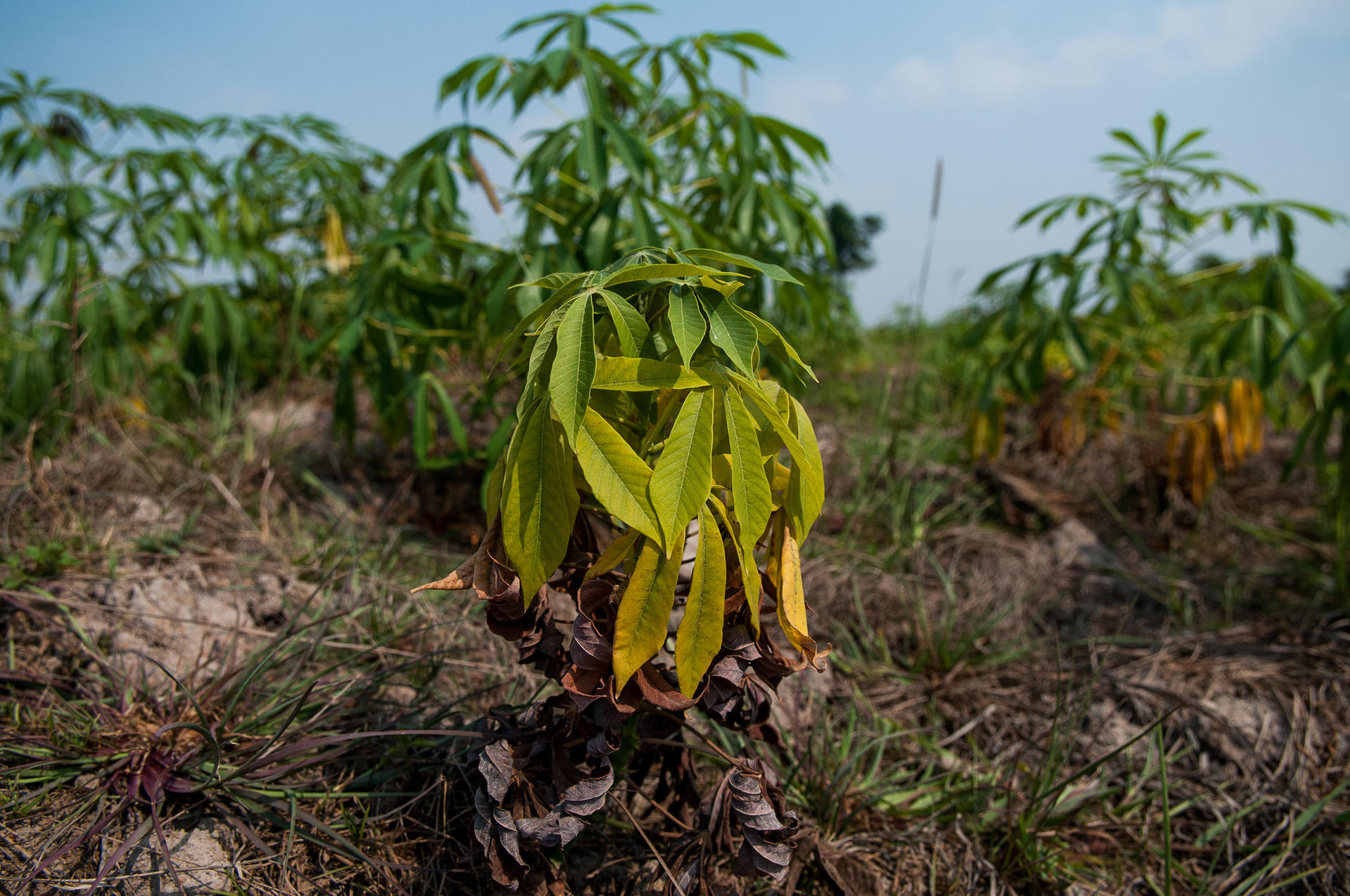
Cassava crop in Cambodia displaying symptoms of cassava witches' broom disease with the yellowing of leaves.
©GeorginaSmith
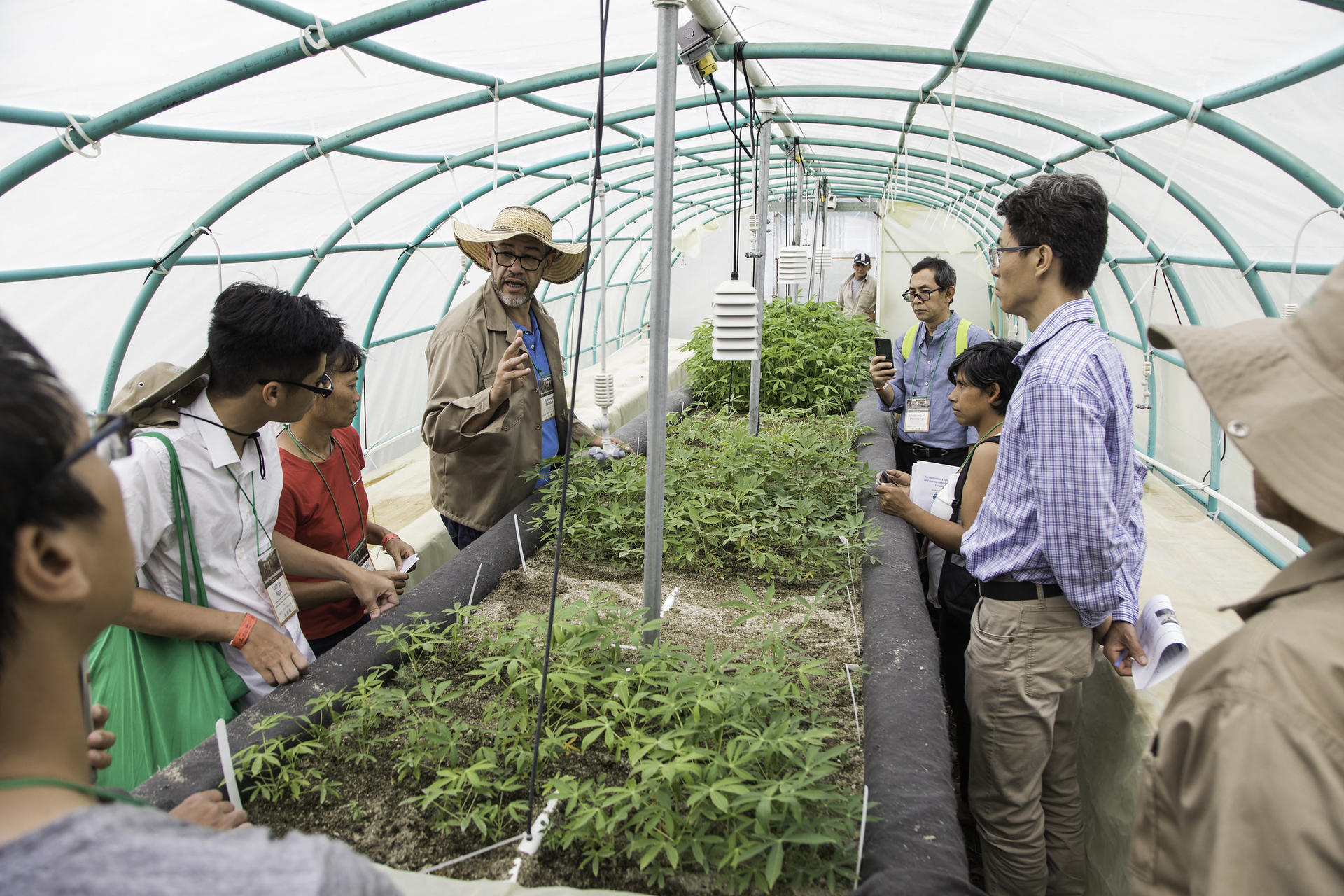
Cassava Breeding Workshop on new concepts and best practices, and hands-on training on breeding tools.
©Alliance/Juan Pablo Marin Garcia
4. Seed Systems and Harvesting
Increased access to clean seed material.
The main objective of the fourth research area is to develop technologies and strategies that will contribute toward the implementation of commercially sustainable cassava seed value chains for this vegetatively propagated crop while promoting adoption by smallholders of highly productive and improved varieties using healthy seed material.
Activities include gaining an in-depth understanding of how farmers and industries access, maintain, exchange, produce, and store planting material, which is a challenging task given the informality of the sector and which contributes significantly to uncontrolled disease spread (cf Delaquis et al., 2018).
The knowledge acquired through these activities is being used to generate policy recommendations designed to contain the spread of disease in South East Asia SEA). These activities are essential for the distribution and adoption of new varieties developed using germplasm generated by the breeders in research area one.
This service area also has the capability to determine the genetic identity of materials, which are needed to study the varietal adoption across the region.
5. Post-harvest and Enhanced Nutrition
Better nutrition and income.
The key objectives in the fifth research area are to create cassava-derived products with desired end-user traits by operating as an interface between breeding and users while fulfilling the expectations of users and processors regarding variety composition and suitability. These objectives are pursued by developing technologies and strategies to reduce root losses during processing and increase product value through specialized starch uses and micronutrient content enhancement.
The fifth research area, operates in close collaboration with research area six as an interface between cassava breeders and end- users to facilitate the integration of consumer and processor expectations in the selection process to develop varieties suitable for the intended purposes.
Part of this work involves developing faster methods for high-throughput phenotyping of functionality and quality attributes (e.g., NIRS based methods) to increase efficiency of early selection in breeding processes while reducing the costs of laboratory-based analyses. Speed is essential, as all testing must be done at harvest for rapid selection and replanting of promising materials. Harvests are carried out on dates determined by trial design aiming at reproducibility of results, in relation to seasonality.
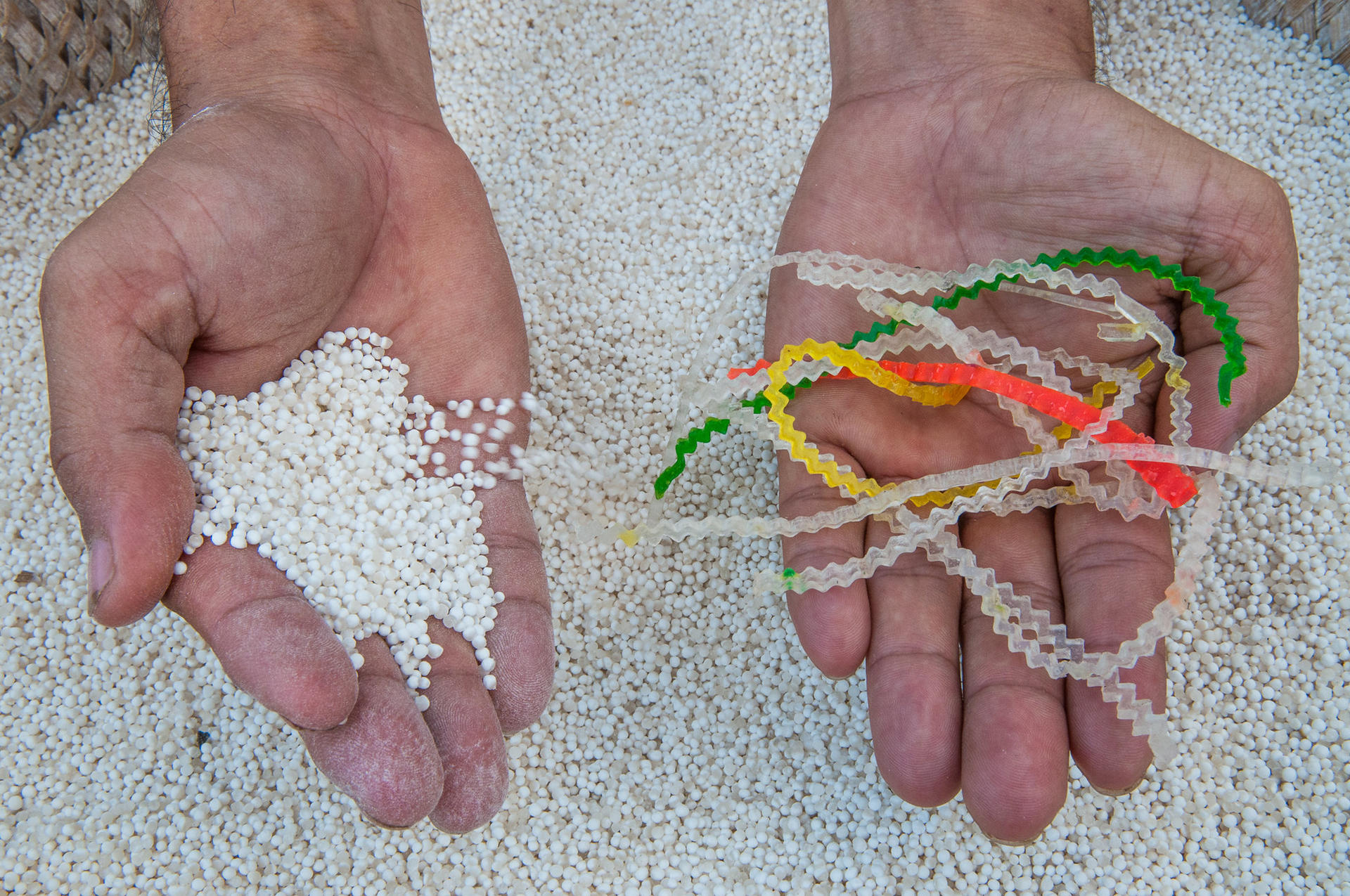
Cassava is used in the starch industry throughout Southeast Asia in areas such as Kampong Cham, Cambodia, to make products from noodles to pharmaceuticals such as Sago and noodles from cassava starch, supporting smallholder incomes.
©Alliance/GeorginaSmith
Contact:

A farmer walks through her field of cassava, in the village of Tiniu, near Mwanza, Northern Tanzania.
©Alliance/NeilPalmer
Contact:
6. Value Chain, Markets and Policy
Unlocking new market growth (in conjunction with all RAs).
The sixth research area brings cross-cutting support to the Cassava Program, guiding it in fulfilling its mission by helping to set research priorities to better assess different stakeholder and end-user demands and needs; to identify market opportunities and production and consumer trends; to develop business models inclusive toward poor farmers, women, and youth; and to generate evidence of the program’s outputs and impacts.
It is tasked with identifying demands and needs of cassava end-users and stakeholders. It works across scales, with a global involvement, although with a stronger South East Asia(SEA ) focus. Its work revolves around understanding value chains, from the supply level to impact pathways (including intervening factors and incentives).
The knowledge and intelligence gathered is then used to help set priorities for and monitor impacts of the Cassava Program.
